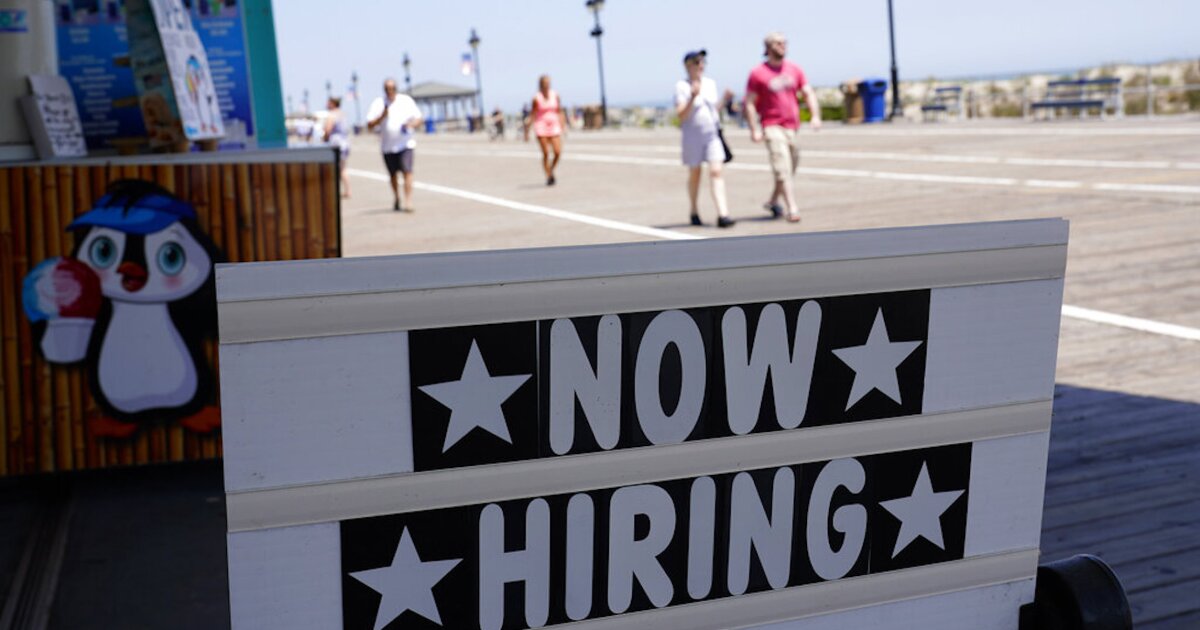

Jobless claims have fallen for another week, again defying expectations and showing that the labor market has remained insulated from the Federal Reserve’s interest rate hikes.
The number of new applications for unemployment benefits fell by 3,000 to 192,000 last week, the Labor Department reported Thursday. That is an extremely low level by historical data and suggests that layoffs are rare and that the unemployment rate is likely to keep trending down.
Falling jobless claims are a sign the labor market is remaining resilient despite the Fed’s historic effort to tighten monetary policy to slow economywide spending and drive down inflation.
Additionally, continuing claims declined by 37,000 to 1.65 million in the week ended Feb. 11.
ECONOMY GREW BY 2.7% IN FOURTH QUARTER OF 2022, HOLDING UP DESPITE RISING INTEREST RATES
The latest report is yet another indication that February will also likely notch strong employment numbers after a gangbusters report from January. The economy gained 517,000 jobs in January, shattering the expectations of most economists. The unemployment rate is now at 3.4% and is the lowest since 1969.
The Fed has raised interest rates several times in the past year, including a few massive hikes, in order to drive down inflation, which is running at 6.4%, according to the consumer price index. Rate hikes naturally depress economic activity and thus are expected to lead to job loss, although the labor market is seemingly defying gravity.
In fact, the moving average for seasonally adjusted initial jobless claims has actually fallen pretty consistently since December, a scenario that would seem on its face contradictory given the continually rising interest rates.
More broadly, the country’s 3.4% unemployment rate is complicated for those who expect there to be a recession in the coming months as well.
“If job growth is indeed as strong as the latest data suggests, then it presents a puzzle in light of other data showing a slowdown in economic activity, as well as widespread expectations of slow growth — and perhaps even a recession — in 2023,” said Preston Caldwell, chief economist at financial services firm Morningstar
, after the most recent employment report was released.
But recent inflation reports have made it seem less likely that the Fed will be able to take its foot off the gas anytime soon with regard to interest rates.
Last week’s latest producer price index report showed that from December to January, wholesale prices rose 0.7% — the largest one-month inflation since June of last year and an increase that would translate to an annual rate of nearly 9%. Annual inflation fell slightly less than expected to 6%.
Additionally, the 6.4% CPI number was only down a tenth of a percentage point from December’s annual rate of inflation, further showing that the higher prices are stickier than economists and the Fed had expected.
That means that the central bank will have to keep raising rates for longer and allow the rates to remain elevated in order to punch back against inflation, a situation that is concerning given that it raises the odds of the economy retreating into a recession.
CLICK HERE TO READ MORE FROM THE WASHINGTON EXAMINER
Gross domestic product growth is also yet to be heavily dinged from the rate hikes. The economy expanded by 2.7% in the fourth quarter of last year, the Bureau of Economic Analysis reported in a revised estimate Thursday.
Additionally, the Atlanta Fed’s “GDP Now” tracker is predicting that GDP growth in the first quarter will rise by 2.5%, which shows that the United States does not appear to be heading for a recession in the early part of 2023.





